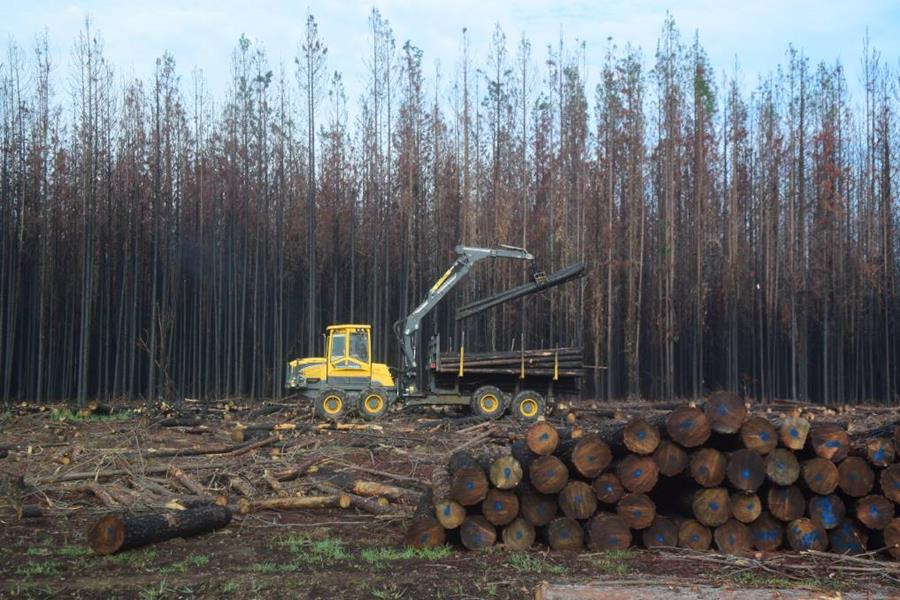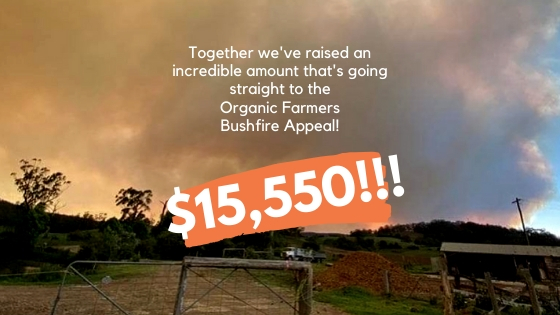
Sharing the load
This summer over 40% of forests set aside for native logging operations have burned.
With the end of native logging in Victoria recently announced, the bushfires have just ramped up the fight for what’s left in our forests a whole lot of notches.
Up in the Victorian central highlands VicForests’ logging contractors, who were already struggling to fill woodchip and timber quotas before the bushfires, have continued clear-felling forests.
Desperate to protect the now much-reduced greater glider, smoky mouse, sooty and powerful owl habit, citizen science group WOTCH successfully sought a supreme court injunction to stop the logging.
Meanwhile, The Australian Forest Products Association (AFPA) are lobbying politicians to keep woodchippers and timber mills going by giving them the go ahead to begin salvage logging in State Forests and National Parks.
Countering the call Professor David Lindermeyer, a prominent landscape ecologist and conservation biologist, says studies show salvage logging pollutes waterways, kills surviving wildlife and potentially delays forest recovery by more than a hundred years.
The AFPA are also talking up “mechanical thinning” as a means of hazard reduction and as a source of woodchips and timber into the future. Pushing back, conservationists view thinning as a cover to continue and expand native logging.
Before Christmas we didn’t have enough forest. Now we have even less.
The scale of the fires boggles my mind; 10 million hectares of forest burned so far, one billion animals killed.
Sometimes I’m tempted to think that we’ve actually lost this and my thoughts turn to stockpiling lentils and enrolling our kids into crossbow classes.
But the other day I saw this email from Philippa Noble, a tree farmer among other things at Brimin Lodge Farm near Yarrawonga.
It was written to the President of the Institute of Foresters of Australia, it read…
…..In a drier climate with more dry lightning strikes igniting fires, timber plantations near mountainous native forest areas will become more and more risky.
If all farmers were encouraged to plant 10% of their farms to managed plantations of fire tolerant species, not only would it spread the resource, benefit farmers and make the industry more resilient, it would also assist with habitat creation and carbon mitigation.
We are being told that we need transformational change to deal with the changing climate – this is an opportunity for transformational change…..
It was so sensible, so practical and so doable; a shared, low-tech solution requiring a small but powerful change in the way we grow our food and fibre.
It was LandCare for our timber.
And who couldn’t get behind that?

You might have noticed over January we’ve been supporting the Organic Farmers Bushfire Appeal by donating $5 from every home delivery and encouraging over 270 people to volunteer to help with the clean-up, recovery and rebuild.
Without farmers we don’t eat, without farmers we don’t have this extraordinary food culture, without farmers we don’t have people stewarding the land that sustains us.
We expected to raise $10,000 but with your help our final total is $15,550. Incredible.
The money from this Appeal (over $60,000 when we make our final donation) will help organic farmers get through these fires with emergency feed, replacement equipment and plantings.
Thank you for all your support – we’ll keep you updated with Appeal news and opportunities to lend farmers a hand as the recovery and rebuild continues.
Have a great week.
Chris

I have thinking about this for a while as my friends live in central Portugal where eucalypts are grown for timber and the plantations are destroying the ecology in the same way that pine plantations destroy ours. Their farm has been burnt twice in the past 5 years. They did some research and found Paulownia trees are fire resistant and fast growing and planted 50 around their small farm. Unfortunately only one survived (in very rocky ground) because voles ate the roots but as we don’t have voles in Australia we may have more luck….?